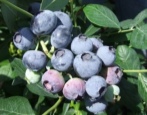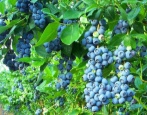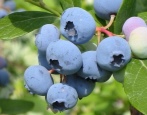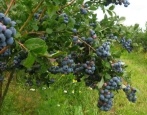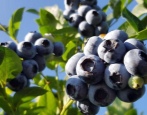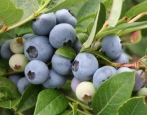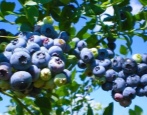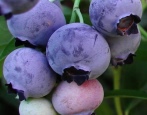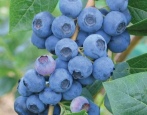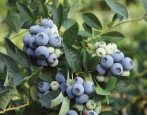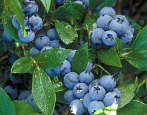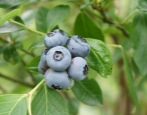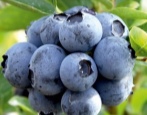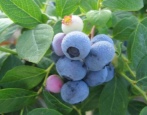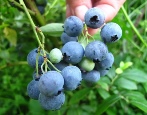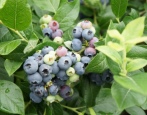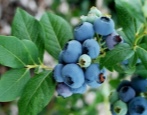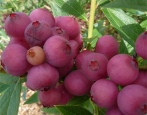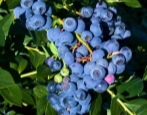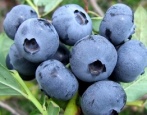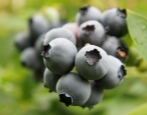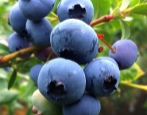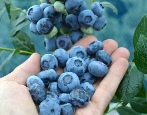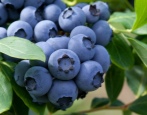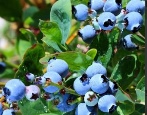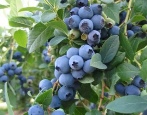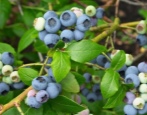
- Authors: Canada
- Ripening terms: early
- Growth type: medium-sized
- Bush height, m: up to 1.6
- Taste: sweet, slightly sour
- Average yield: 3-4 kg per bush
- Fruit size: medium and large
- Fruit shape: rounded
- Fruit color: light blue
- Description of the bush: upright
Each fruit variety is unique in its own way, but only a few of them have gained particular popularity among Russian summer residents. Chauntecleer blueberries are chosen for both sale and personal use. These are fragrant, tasty and healthy berries that are recommended to be included in the diet of children and adults. Before you start planting berry bushes, you should carefully read the main characteristics and growing rules.
Description of the variety
The maximum height of medium-sized shrubs reaches 1.6 meters. The variety is erect, branches are ascending. The plant looks neat and will not take up much space on the site. The elongated oval leaves are colored bright green. It is much brighter on the front side than on the back. Light streaks are visible on the surface.
Fruit characteristics
The shape of the berries is standard, round. The weight is 1.8-1.9 grams, and the diameter of the fruits is 1.6-1.9 centimeters. Sizes are marked as medium or large. The skin is light blue with a pale waxy coating. Berries have a moderately dense structure.
The separation of berries is dry, which simplifies the collection of fruits. The Chauntecleer variety can be harvested using special mechanized equipment. Berries are stored for a long time, especially if favorable conditions are created for them. They can also be transported over long distances, which is very important when grown for commercial purposes. The berries are located on the outside of the shrub for easy ripening and picking.
Taste qualities
The taste of the fruit is expressive and delicate. Sweetness noticeably prevails over sourness. Additional notes in the flavor only emphasize the gastronomic basis.
Ripening and fruiting
Chauntecleer blueberries belong to the early varieties, and the fruiting period begins at the end of the first summer month. The berries ripen almost at the same time, so the entire crop can be harvested in just one or several passes.
Yield
From one adult shrub, you can get from 3 to 4 kilograms of juicy fruits. This is an average figure, the yield can be higher or lower than the declared one, depending on many factors that affect fruiting. The purpose of the crop is universal. This means that it can be used to prepare various delicacies and desserts.
Self-fertility and the need for pollinators
If additional crops grow on the same plot along with the above variety, the yield increases markedly. Blueberry varieties that bloom at the same time as Chauntecleer are suitable. Experienced gardeners recommend the following types: Spartan, Duk, Reka.
Growing and care
The optimal area for one shrub is about one and a half meters. When laying the planting between the plants, a gap of 0.8-1.2 meters is maintained, and between the rows - 1.5-1.7 meters. Pruning is advised every season to get young growth. This has a positive effect on productivity (the berries grow larger).
The soil in the area of the trunk circle is covered with mulch, consisting of coniferous needles mixed with peat and rotted pine sawdust. Shrubs are cut before the start of sap flow, in early spring (from March to early April).
A small stimulating pruning, the main task of which is to renew the shrub, is carried out in the third year. Shoots that are of no use are removed: sick, broken, inclined below 45 centimeters. Pruning for rejuvenation is performed in the period from 5 to 6 years of plant life.
And also the following conditions should be met.
Chauntecleer blueberries need enough moisture, otherwise the berries will become dry and tasteless. It is necessary to maintain a balance between stagnant moisture and drought. In the heat, watering is carried out more often, and in the rainy season they completely refuse them.
Weeds take nutrients from the soil, so you need to get rid of them regularly.
The standard scheme for using dressings is 3 times throughout the season. Beginners are advised to opt for ready-made fertilizers designed for berry bushes.

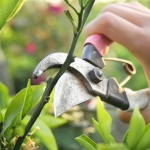
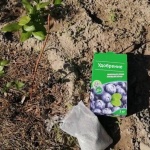
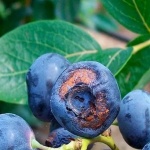

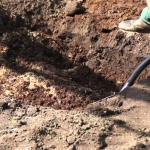
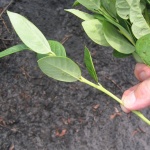
Review overview
Reviews of the Chauntecleer variety are mostly positive. This variety is found not only on the territory of Russia, but also in neighboring states. This type of garden blueberry was highly appreciated for its simplicity in care and cultivation, as well as for the amicable ripening of fruits. The harvested berries are stored for a long time and are highly transportable.
There are also negative reviews, and they relate to the yield. Many summer residents note that more productive varieties can be planted on the site. To collect the maximum number of berries, you have to compact the planting.
